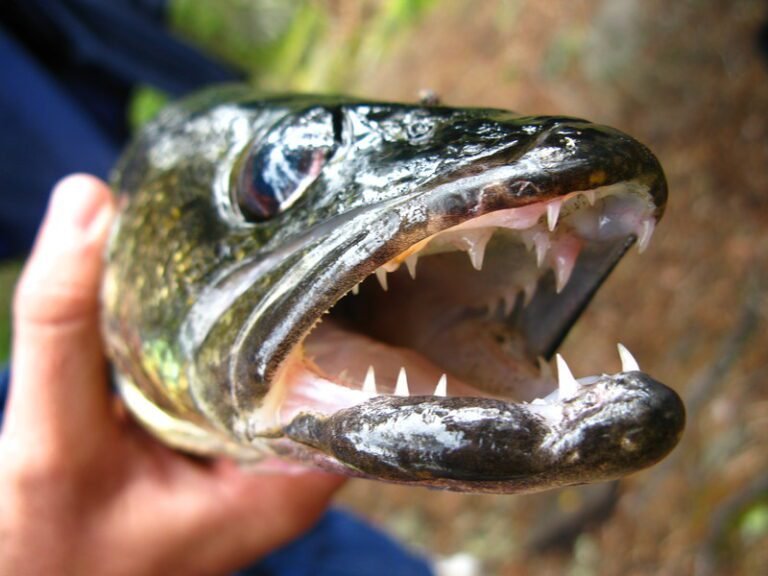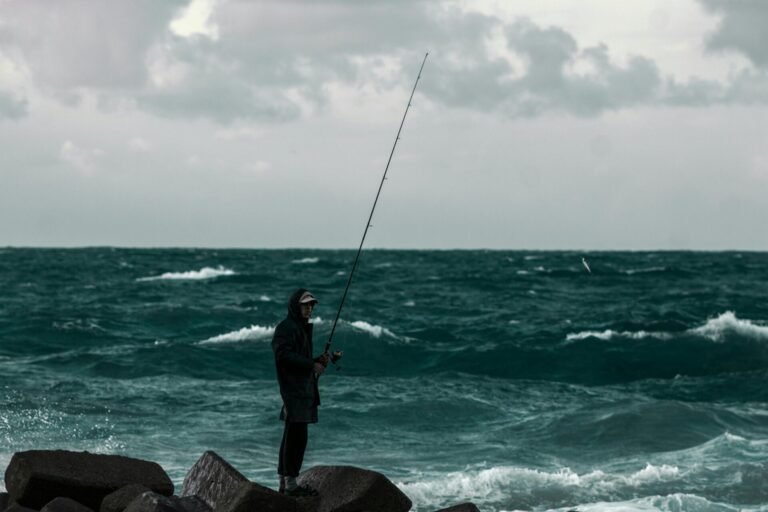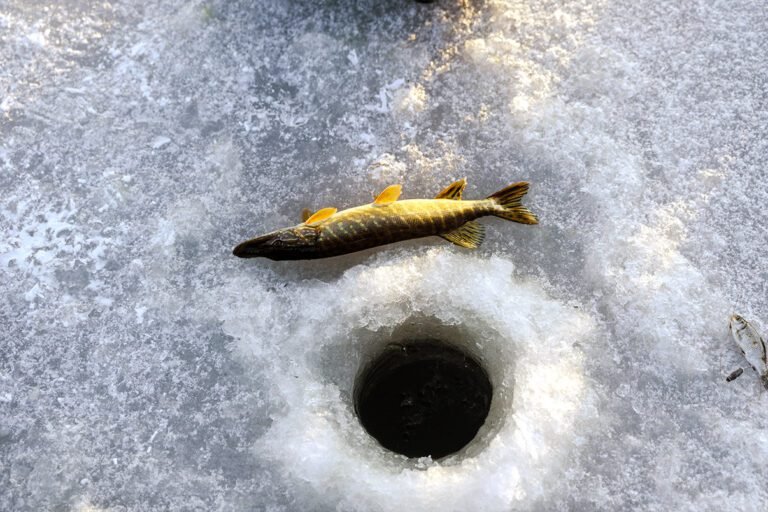Fish finder is an important tool for anglers. Whether you are doing ice fishing or saltwater water fishing, it will help you locate specific fish species in a body of water. By using sonar and electronics, fish finder is able to make a clear picture of the underwater environment, allowing fishermen to make informed decisions about where to fish and what techniques to use.
But how does a fish finder work? In this article, we’ll take a closer peek at the technology behind fish finders and how they help fishermen find and catch fish.
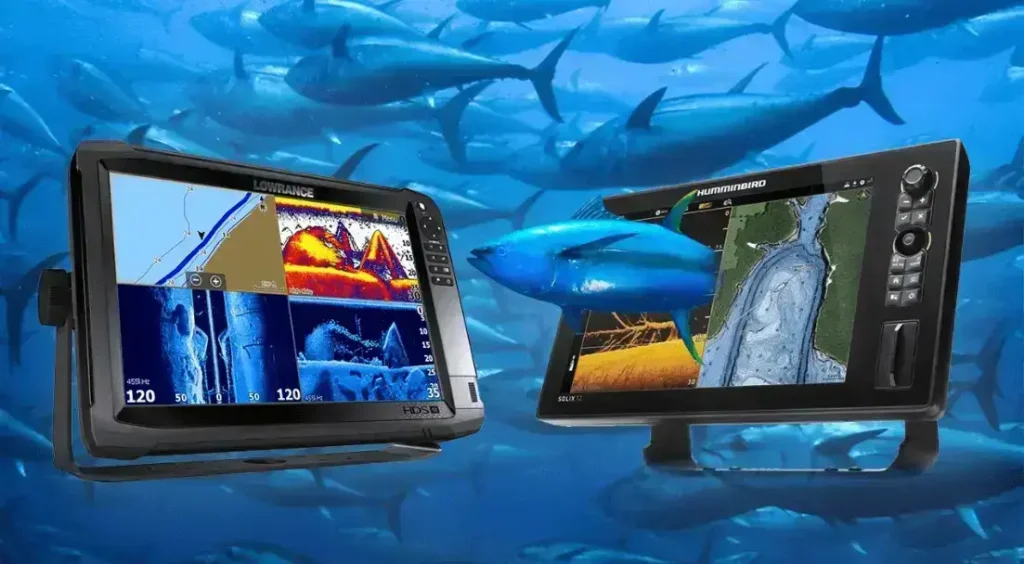
What Is a Fish Finder?
A fish finder is an appliance that uses technology to create and display underwater objects, such as fish and other marine life, as well as features of the underwater environment, such as the bottom of a body of water and structures like reefs, wrecks, and bridges. Recreational and professional anglers commonly use them to locate and catch fish more efficiently. They can be mounted on a boat or used as a handheld device.
Fish finder normally displays the information they gather on the screen, representing the underwater environment and the location and size of any objects detected. Some fish finder also has further features, such as GPS navigation, mapping software, and temperature sensors. In this article, you will know what it is and how does a fish finder work.
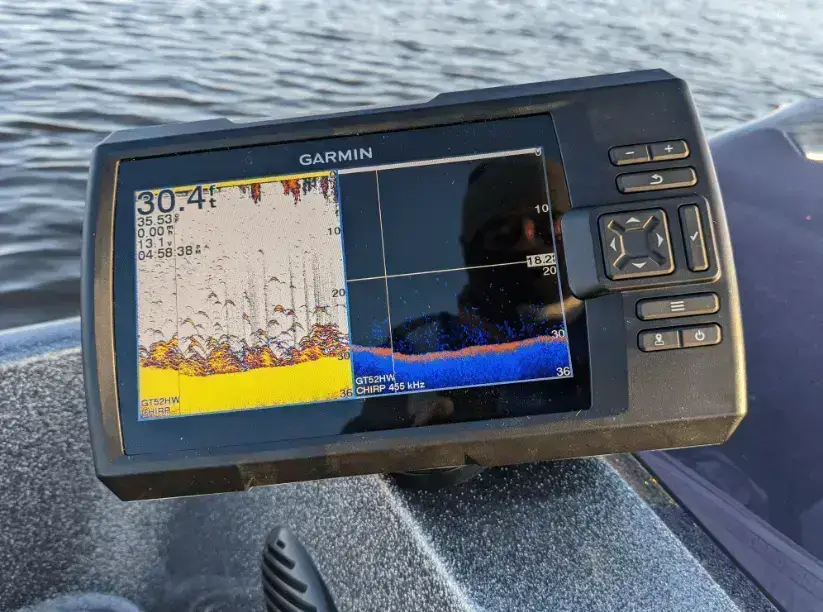
How Does a Fish Finder work In 2024?
Fish finder uses a mixture of sonar and electronics to detect and display underwater objects, including fish. When a fish finder is activated, it emits a sound wave, or “ping,” through the water using a transducer. The transducer is a device that converts electrical energy into sound waves and vice versa. The sound waves travel through the water and bounce off any objects it encounters as an echo.
The transducer in the fish finder then receives the reflected sound waves, or “echoes,” and converts them back into an electrical signal. The fish finder measures the time of an electrical signal takes to bounce back after hitting an object. This process is repeated many times per second to improve resolution. It helps them to create a visual representation of the underwater environment on a display screen, which may show a two-dimensional or three-dimensional image of the bottom of the water and the objects within it.
A Fish finder can work at different frequencies, depending on the specific model and the kind of information it is designed to gather. Higher frequencies are better for detecting smaller objects and details, while lower frequencies are better for detecting larger objects and depths. Fish finder also varies in their range or the maximum distance they can detect objects.
Can You Use a Fish Finder Out of water?
A fish finder is created to be used in water and will not perform when used out of water. The transducer, which is the component of the fish finder that emits and receives sound waves, must be submerged in water to transmit and receive the sound waves that are used to detect underwater objects.
When the transducer is not in the water, it will not be able to function properly, and the fish finder will not be able to detect or display any information. The display screen and other electronic components of a fish finder are not designed to be used out of the water and may be damaged if exposed to the elements. Overall, a fish finder is intended to be used only in an aquatic environment and will not work when used out of water.
Types of Fish Finders:
Various types of fish finders are available on the market, each with its own features and capabilities. Here are some common types of the fish finder:
- Flasher fish finder
- GPS fish finder
- Side-imaging fish finder
- Down-imaging fish finder
Flasher Fish Finder:
Flasher fish finder is very famous among ice fishermen and is also used by anglers who like to see a graphical representation of the underwater environment. They can be ascended on a boat or used as a handheld device. Flasher fish finders generally operate at a single frequency and have a limited range, but they are relatively simple to use. They can be an effective tool for finding and catching fish.
These fish finders show the information they gather in a circular “flashing” pattern on a screen, with the outer ring describing the shallowest depths and the inner ring describing the deepest depths.
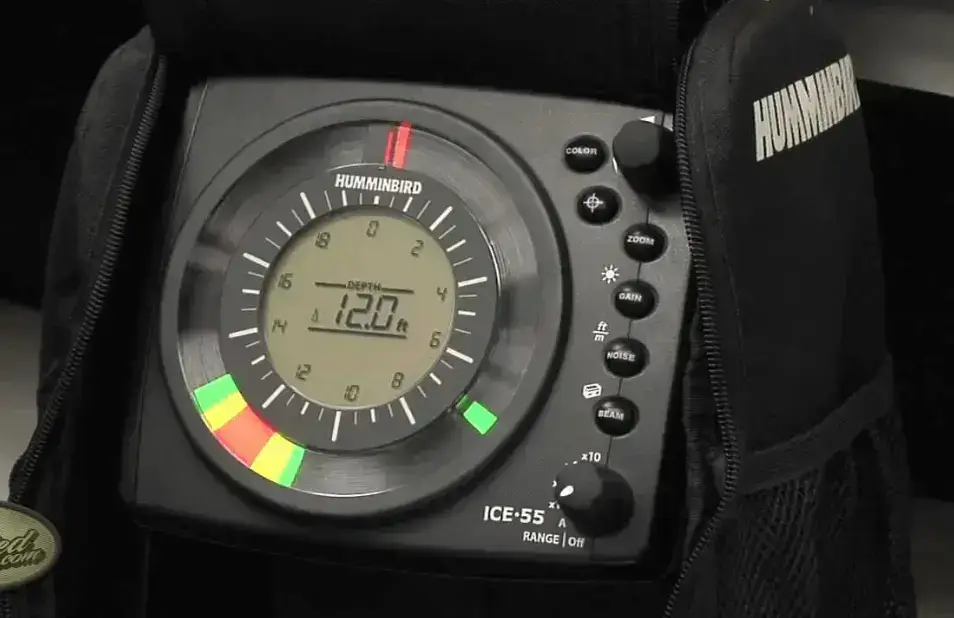
Pros And Cons of Using a Flasher:
One of the major pros of using a flasher fish finder is that it provides real-time information, allowing you to monitor the activity beneath the surface of the water continuously. They are a good choice for beginners or the ones who are newbies because they are easy to use and generally affordable.
However, there are some cons to using a flasher fish finder. One of the main cons of using a flasher fish finder is that they may not be as accurate as other types of fish finders, particularly in deeper water or when trying to detect smaller fish. The flashing display can be difficult to interpret for some users and may provide less detail than other types of displays.
GPS Fish Finder:
A GPS fish finder is a type of fish finder that uses a GPS (Global Positioning System) receiver to display the location of the boat and any underwater structures or features on a map. They also have the capability to store the location of fishing hot spots and allow the user to mark and navigate to them.
GPS fish finder is commonly used by experienced and pro anglers to locate and catch fish more efficiently. They can be mounted on boats or used as handheld devices like flashers. GPS fish finders may also have additional features, such as mapping software and temperature sensors, to provide additional information about the underwater environment.
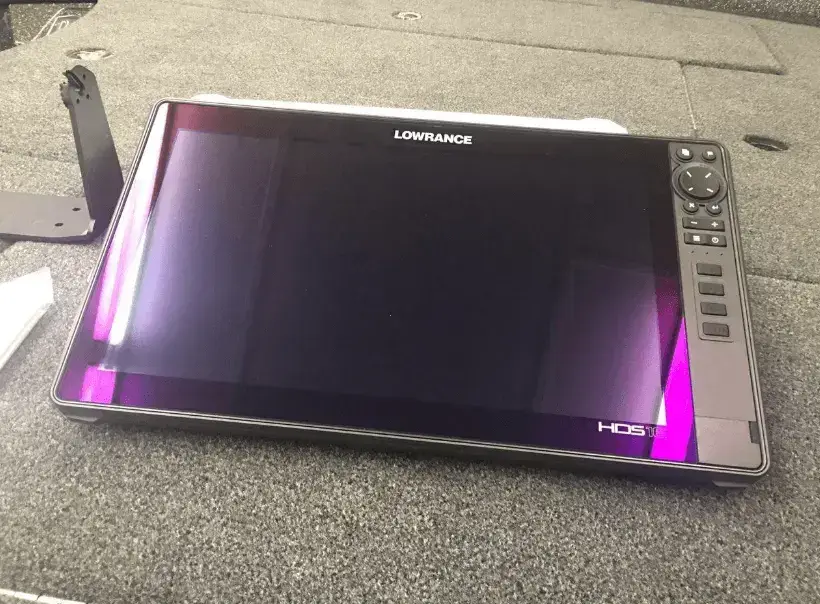
Pros And Cons of Using a GPS:
There are some pros and cons to using a GPS fish finder. One of the main advantages is the improved accuracy and efficiency it provides. Using GPS coordinates to locate fish, you can spend less time looking for them and more time catching them. It also helps you navigate and mark specific fishing spots for future reference, making it easy to return to your favorite spots.
However, there are some drawbacks to using a GPS fish finder. A potential disadvantage is cost, as these devices can be expensive. They can be difficult to use for a novice and require some technical expertise to set up and operate effectively. Another big issue is battery life, as the device will need to be charged or its batteries replaced regularly.
Side-imaging Fish Finder:
A Side-imaging fish finder uses advanced sonar technology to create a precise, high-resolution image of the underwater environment. They work by emitting a sonar beam from the transducer and using the reflections to create an image of the underwater landscape. The transducer is typically mounted on the bottom of the boat and can send out multiple beams at different angles, allowing the user to see a wide area to the left and right of the boat.
Side-imaging fish finder help identifies structures, contours, and other elements that may hold fish and for locating and tracking individual fish. They can be extremely helpful in areas with a lot of submerged cover or structure, as they allow the user to see beyond the immediate area around the boat. You can use a side-imaging fish finder in both freshwater and saltwater environments.
Pros And Cons of Using a Side-imaging:
Using a Side-imaging fish finder can give you many benefits. They provide a detailed, high-resolution image of the underwater environment, which can help you locate and detect fish more accurately. It can be used in both saltwater and freshwater environment, making them a versatile tool for any fisherman. They are mounted on the bottom of the boat allowing you to scan for fish and other underwater features while moving. It can be more convenient than using a handheld fish finder or trying to locate fish from the surface.
However, there are also some potential disadvantages to using a side-imaging fish finder. A side-imaging fish finder may be less effective in shallow water or areas with much clutter or interference. Additionally, they are expensive as well.
Down-imaging Fish Finder:
As the name suggests, down-imaging fish finders normally have a display screen that shows the image of the bottom in real-time as you move through the water. The image is color-coded to show various depths and features, with shallower areas typically occurring in lighter colors and deeper areas appearing in darker colors. The user can modify the settings on the fish finder to customize the image and display additional information, such as water depth, bottom contours, and temperature.
Pros And Cons of Using a Down-imaging:
Using a down-imaging fish finder provides various advantages for fishermen, as they can be particularly useful for identifying structures, contours, and other features on the bottom of the water body, as well as for locating and tracking individual fish. It can also be helpful in areas with a lot of underwater cover or structure, as they allow the user to see beyond the immediate area around the boat.
However, there are some cons to using a down-imaging fish finder. One disadvantage is the cost, as these devices can be expensive. Another disadvantage is, relying too heavily on a down-imaging fish finder can take away from the traditional skills and techniques of fishing, such as reading the water and understanding how to locate and target specific types of fish.
What is CHIRP on a Fish Finder?
CHIRP (Compressed High-Intensity Radiated Pulse) is a technology used in some fish finders to enhance the accuracy and resolution of the sonar image. It emits continuous, varying frequency sonar pulses instead of single pulse-like traditional fish finders. It lets the CHIRP system provide a vaster range of data and a clearer, more detailed image of the underwater environment.
CHIRP fish finder operates a special transducer that can transmit and receive a wide range of frequencies, permitting them to scan a wider range of depths and deliver a more detailed image of the bottom and any structures or objects in the water. CHIRP fish finder is normally more expensive than a traditional fish finder.
Fish Finders Batteries:
Fish finders normally use one or two types of batteries: rechargeable batteries or disposable batteries.
Rechargeable batteries are generally more costly upfront, but they can be more effective in the long run, as they can be recharged and used multiple times. They are also more environmentally friendly, as they decrease waste from disposable batteries. However, rechargeable batteries need more maintenance and may only last for a short time compared to disposable batteries.
Disposable batteries are normally affordable and easier to use as they do not require recharging. However, they will need to be replaced when they run out of power, which can be problematic and add to the overall cost of using a fish finder.
FAQs:
how does a fish finder detect fish?
A fish finder uses sonar technology to see fish. Sonar works by radiating a sound wave. When the sound wave strikes a fish or other object in the water, it reflects off the surface and returns to the fish finder, which is detected by the transducer. The time sound waves take to return is used to calculate the distance to the object.
is it worth it having a fish finder?
A fish finder is worth having, depending on your fishing needs and preferences. A fish finder can be a good tool for locating and tracking fish. They can also provide detailed information about the underwater environment. However, a fish finder can also be expensive and may require some technical expertise to set up and operate effectively. Overall, a fish finder can be a valuable tool for fishermen, but it is essential to carefully consider your needs and budget before deciding.
Conclusion:
In conclusion, fish finders are essential for anglers and other water enthusiasts who want to locate and target specific fish species. They can also be used for scientific purposes, providing a valuable resource for understanding and exploring the underwater world. I hope you like this article, and you took a good idea at how does a fish finder work and your confusion is cleared now.

